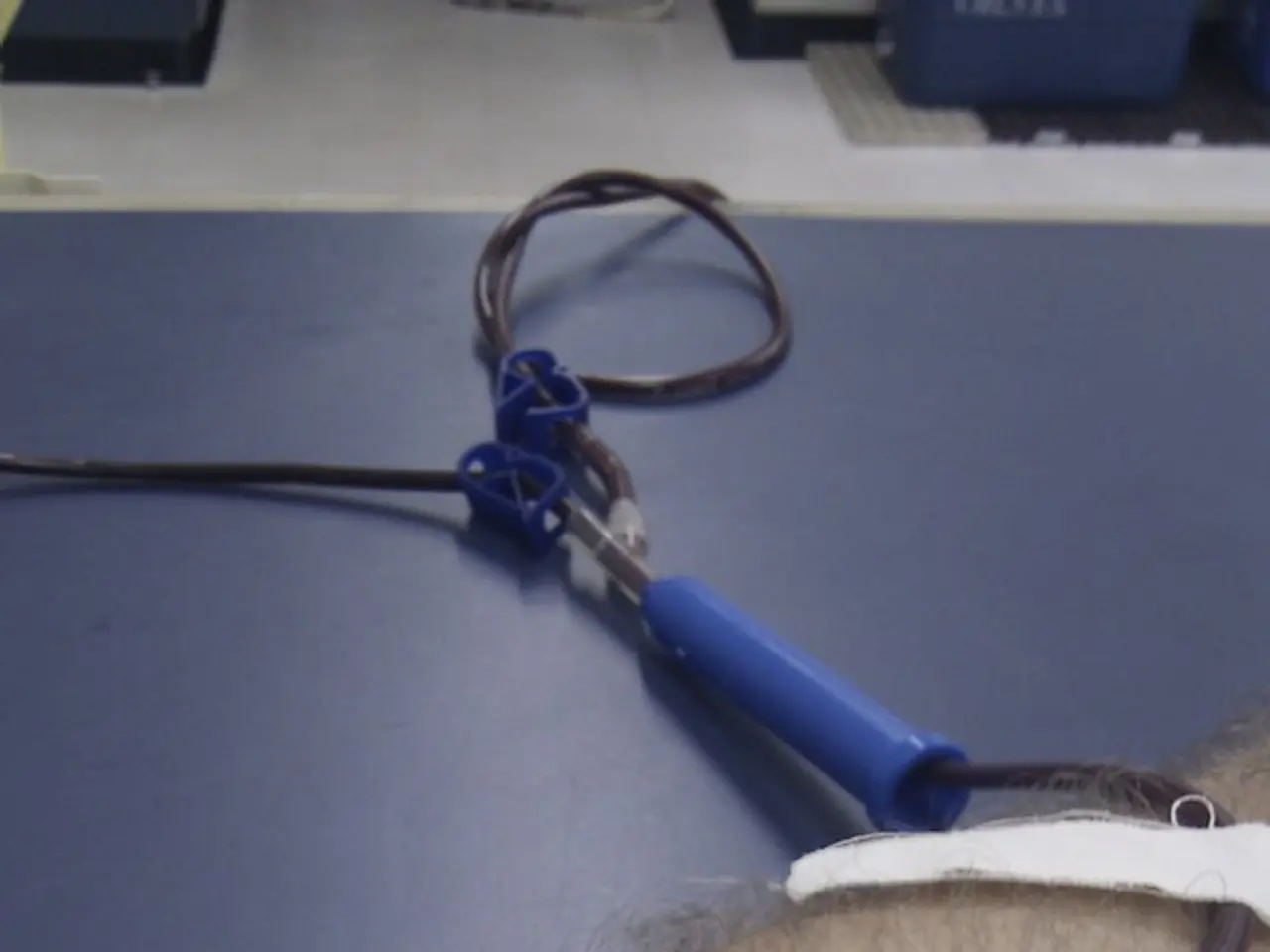Signs and Initial Manifestations of Kidney Stones: Recognizing Their Onset
In the human body, kidney stones are a common health issue that affects millions worldwide. These mineral deposits form in the kidneys and can vary in size, from as small as a grain of sand to as large as a pebble. Here's what you need to know about kidney stones, their symptoms, causes, and treatment.
Kidney stones usually develop when the urine contains excessively high levels of certain chemicals. The four main types of kidney stones are calcium stones, struvite stones, uric acid stones, and cystine stones. Around 5-10% of kidney stones are uric acid stones, while less than 1% are composed of the amino acid cystine. Calcium oxalate and calcium phosphate are the two types of calcium stones. Struvite stones are usually the result of chronic urinary tract infections (UTIs).
The early signs and symptoms of a moving kidney stone can be quite distressing. Sharp, cramp-like pain that often starts in the side, back, or lower abdomen is a common symptom, as is pain during urination, often described as burning or discomfort. A frequent urge to urinate, sometimes with a sensation of incomplete bladder emptying, may also occur. Blood in the urine (hematuria) can cause the urine to appear pink, red, or brown. Nausea and vomiting, as well as cloudy or foul-smelling urine, may also be noticed. In some cases, fever and chills may occur, indicating an infection related to the stone.
If symptoms escalate to severe pain that hinders sitting or standing, difficulty urinating, or fever with chills, immediate medical attention is necessary. This is because as the kidney stone moves from the kidney into the narrow ureter, it can block urine flow, increasing pressure and causing swelling and intense pain along the urinary tract.
Small kidney stones may pass through the urinary tract without causing any symptoms. However, larger stones may become stuck, causing pain, bleeding, inflammation, or infection. In such cases, doctors usually reserve surgery for stones that may have caused or led to infection or stones that do not pass and block urine flow from the kidney.
People with certain risk factors are more susceptible to developing kidney stones. Being male, being of white, non-Hispanic ethnicity, having a family history of kidney stones, consuming a diet high in animal proteins, taking certain supplements, medications, or conditions like obesity, type 2 diabetes, bowel conditions, gout, abnormal growth of parathyroid glands, cystic kidney diseases, kidney abnormalities from birth, or malpositioned or misshapen kidneys can increase a person's risk.
In some cases, a doctor may prescribe the medication Tamsulosin to relax the ureter and make it easier for stones to pass. A urinalysis will determine if infection or blood is present in the urine, and a doctor may order an imaging test, such as an ultrasound or CT scan, to diagnose a kidney stone and determine the size and location of the stone.
Monitoring symptoms and consulting a healthcare professional promptly can help manage the condition effectively. By understanding the symptoms, causes, and treatment of kidney stones, individuals can take proactive steps to prevent and manage this common health issue.
- Kidney stones are often linked to excessive levels of certain chemicals in the urine.
- Calcium oxalate and calcium phosphate are two types of calcium stones that make up a significant percentage of kidney stones.
- Struvite stones are usually generated by chronic urinary tract infections (UTIs).
- Uric acid stones account for around 5-10% of kidney stones, while cystine stones constitute less than 1%.
- The early signs of moving kidney stones can be quite uncomfortable, with symptoms like sharp, cramp-like pain, pain during urination, frequent urination, and hematuria (blood in the urine).
- Severe pain, difficulty urinating, and fever with chills can indicate that a kidney stone has blocked urine flow, necessitating immediate medical attention.
- Small kidney stones may pass through the urinary tract without exhibiting symptoms, but larger stones can become stuck, causing pain, bleeding, inflammation, or infection.
- Certain risk factors, such as being male, having a family history of kidney stones, consuming a high-protein diet, or having conditions like obesity, type 2 diabetes, gout, or cystic kidney diseases, can increase a person's susceptibility to kidney stones.
- In some cases, doctors may recommend Tamsulosin to relax the ureter and facilitate stone passage.
- A urinalysis can confirm the presence of infection or blood in the urine, while imaging tests like ultrasounds or CT scans can diagnose kidney stones and determine their size and location.
- Preventive measures and timely consultation with a healthcare professional can aid in effectively managing kidney stones.
- Recognizing the symptoms, causes, and treatment of kidney stones empowers individuals to take proactive steps towards preventing and managing this common health issue.
- Chronic kidney diseases, chronic-health conditions like diabetes and asthma, and other medical-conditions like HIV, hepatitis, psoriatic arthritis, ankylosing spondylitis, and chronic-kidney-disease are all part of the wider spectrum of chronic diseases that require diligent management for the maintenance of urinary health and overall health-and-wellness in individuals.




